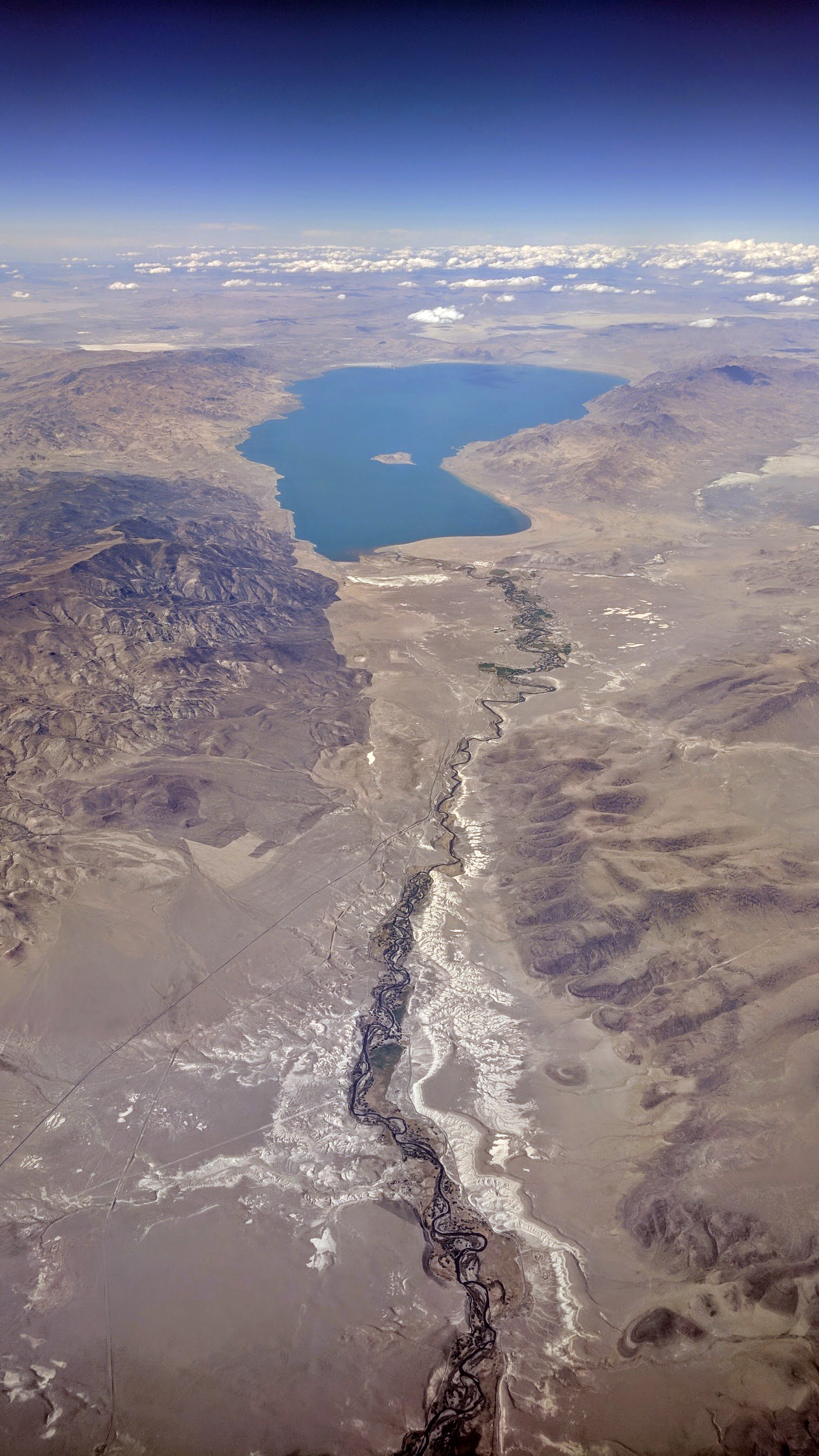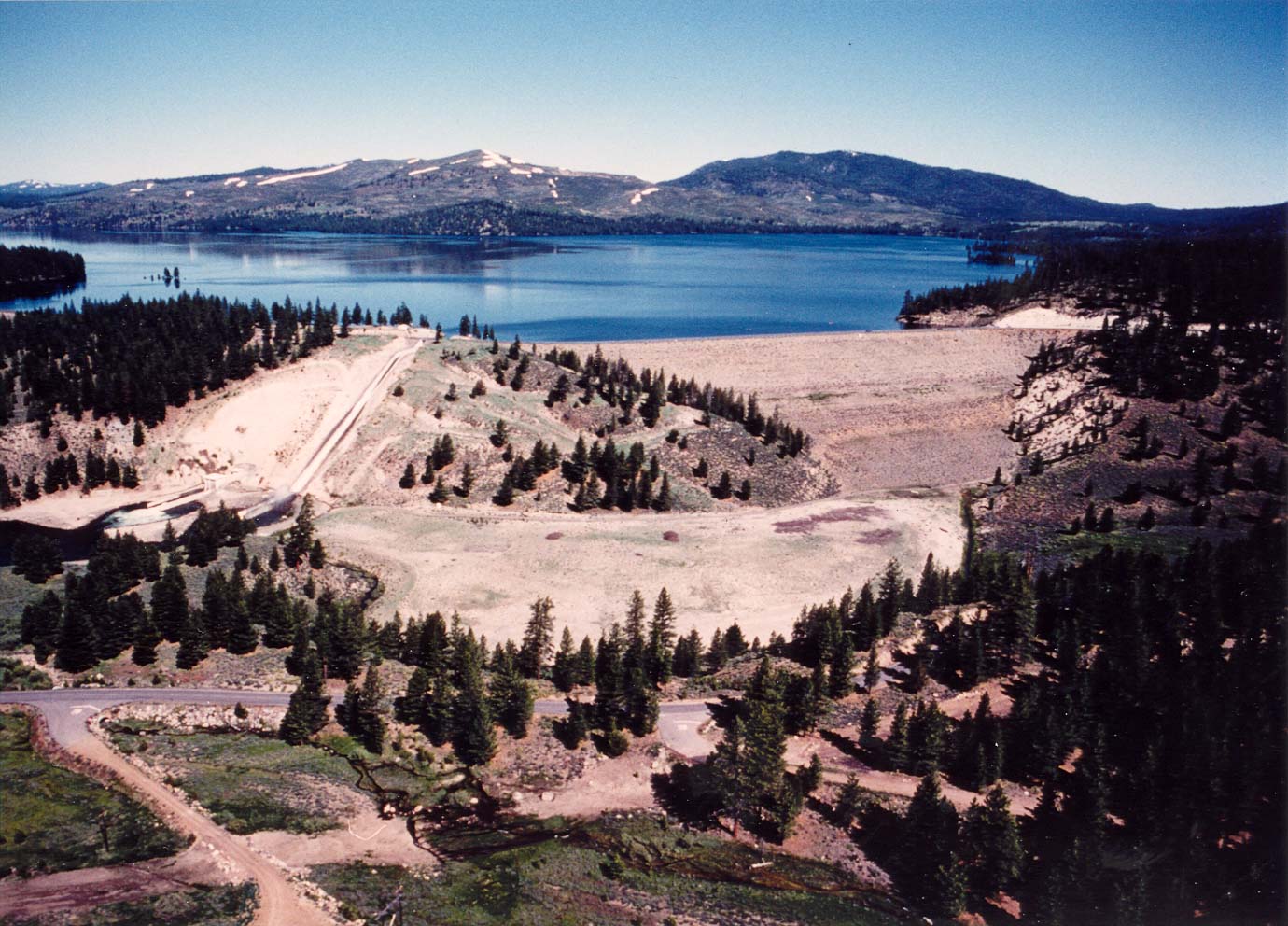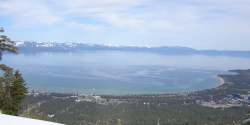|
Chasmistes Cujus
The cui-ui (''Chasmistes cujus'') is a large sucker fish endemic to Pyramid Lake and, prior to its desiccation in the 20th century, Winnemucca Lake in northwestern Nevada. It feeds primarily on zooplankton and possibly on nanoplankton (such as algae and diatoms). The maximum size of male cui-ui is approximately and , while females reach approximately and . The life span of cui-ui is typically about forty years, but the fish do not reach sexual maturity until at least age eight. The cui-ui is an endangered species, and one of the few surviving members of its genus. The cui-ui population is generally improving in numbers, having attained an estimated population exceeding one million in 1993, thanks to the efforts of the U.S. Environmental Protection Agency in analysis of the Truckee River spawning grounds and of the Nevada Department of Environmental Protection and EPA in following up on protection measures. The reason the cui-ui remains endangered (though upgraded from critic ... [...More Info...] [...Related Items...] OR: [Wikipedia] [Google] [Baidu] |
Edward Drinker Cope
Edward Drinker Cope (July 28, 1840 – April 12, 1897) was an American zoologist, paleontologist, comparative anatomist, herpetologist, and ichthyologist. Born to a wealthy Quaker family, Cope distinguished himself as a child prodigy interested in science; he published his first scientific paper at the age of 19. Though his father tried to raise Cope as a gentleman farmer, he eventually acquiesced to his son's scientific aspirations. Cope married his cousin and had one child; the family moved from Philadelphia to Haddonfield, New Jersey, although Cope would maintain a residence and museum in Philadelphia in his later years. Cope had little formal scientific training, and he eschewed a teaching position for field work. He made regular trips to the American West, prospecting in the 1870s and 1880s, often as a member of United States Geological Survey teams. A personal feud between Cope and paleontologist Othniel Charles Marsh led to a period of intense fossil-finding competiti ... [...More Info...] [...Related Items...] OR: [Wikipedia] [Google] [Baidu] |
Truckee River
The Truckee River is a river in the U.S. states of California and Nevada. The river flows northeasterly and is long.U.S. Geological Survey. National Hydrography Dataset high-resolution flowline dataThe National Map accessed October 20, 2012 The Truckee is the sole outlet of Lake Tahoe and drains part of the high Sierra Nevada, emptying into Pyramid Lake in the Great Basin. Its waters are an important source of irrigation along its valley and adjacent valleys. Naming of the river When John C. Frémont and Kit Carson ascended the Truckee River on January 16, 1844, they called it the Salmon Trout River, after the huge Lahontan cutthroat trout (''Oncorhynchus clarki henshawi'') that ran up the river from Pyramid Lake to spawn. However, the river was ultimately named after a Paiute chief known as Truckee, who in 1844 guided an emigrant party from the headwaters of the Humboldt River to California via the Truckee River, Donner Lake, and Donner Pass. Appreciative of their Nati ... [...More Info...] [...Related Items...] OR: [Wikipedia] [Google] [Baidu] |
Stampede Dam
Stampede Dam (National ID # CA10192) is a dam in Sierra County, California, impounding the Little Truckee River. The earthen and rock-filled dam was constructed in 1970, at 239 feet high and 1,511 feet long at the crest. It was a project of the United States Bureau of Reclamation, not primarily for flood control or irrigation storage as usual, but for fishery enhancement, primarily to facilitate the spawning of the critically endangered species cui-ui fish downstream. The dam is owned and operated by the Bureau. The reservoir it creates, Stampede Reservoir, has a water surface of about 3,340 acres and about 25 miles of shoreline, with a maximum capacity of 226,500 acre-feet. Recreation includes fishing (for kokanee salmon, rainbow, brook, brown and lake (mackinaw) trout, etc.), hunting, boating, camping and hiking. There is an accessible viewing platform at Stampede Vista Point. See also * List of lakes in California * List of dams and reservoirs in California Following i ... [...More Info...] [...Related Items...] OR: [Wikipedia] [Google] [Baidu] |
Salinity
Salinity () is the saltiness or amount of salt (chemistry), salt dissolved in a body of water, called saline water (see also soil salinity). It is usually measured in g/L or g/kg (grams of salt per liter/kilogram of water; the latter is dimensionless and equal to ‰). Salinity is an important factor in determining many aspects of the chemistry of natural waters and of biological processes within it, and is a state function, thermodynamic state variable that, along with temperature and pressure, governs physical characteristics like the density and heat capacity of the water. A contour line of constant salinity is called an ''isohaline'', or sometimes ''isohale''. Definitions Salinity in rivers, lakes, and the ocean is conceptually simple, but technically challenging to define and measure precisely. Conceptually the salinity is the quantity of dissolved salt content of the water. Salts are compounds like sodium chloride, magnesium sulfate, potassium nitrate, and sodium bicarbo ... [...More Info...] [...Related Items...] OR: [Wikipedia] [Google] [Baidu] |
Potamodromous
Fish migration is mass relocation by fish from one area or body of water to another. Many types of fish migrate on a regular basis, on time scales ranging from daily to annually or longer, and over distances ranging from a few metres to thousands of kilometres. Such migrations are usually done for better feeding or to reproduce, but in other cases the reasons are unclear. Fish migrations involve movements of schools of fish on a scale and duration larger than those arising during normal daily activities. Some particular types of migration are ''anadromous'', in which adult fish live in the sea and migrate into fresh water to spawn; and ''catadromous'', in which adult fish live in fresh water and migrate into salt water to spawn. Marine forage fish often make large migrations between their spawning, feeding and nursery grounds. Movements are associated with ocean currents and with the availability of food in different areas at different times of year. The migratory movements m ... [...More Info...] [...Related Items...] OR: [Wikipedia] [Google] [Baidu] |
Biota (ecology)
A biome () is a biogeographical unit consisting of a biological community that has formed in response to the physical environment in which they are found and a shared regional climate. Biomes may span more than one continent. Biome is a broader term than habitat and can comprise a variety of habitats. While a biome can cover large areas, a microbiome is a mix of organisms that coexist in a defined space on a much smaller scale. For example, the human microbiome is the collection of bacteria, viruses, and other microorganisms that are present on or in a human body. A biota is the total collection of organisms of a geographic region or a time period, from local geographic scales and instantaneous temporal scales all the way up to whole-planet and whole-timescale spatiotemporal scales. The biotas of the Earth make up the biosphere. Etymology The term was suggested in 1916 by Clements, originally as a synonym for ''biotic community'' of Möbius (1877). Later, it gained its cur ... [...More Info...] [...Related Items...] OR: [Wikipedia] [Google] [Baidu] |
Dissolved Oxygen
Oxygen saturation (symbol SO2) is a relative measure of the concentration of oxygen that is dissolved or carried in a given medium as a proportion of the maximal concentration that can be dissolved in that medium at the given temperature. It can be measured with a dissolved oxygen probe such as an oxygen sensor or an optode in liquid media, usually water. The standard unit of oxygen saturation is percent (%). Oxygen saturation can be measured regionally and noninvasively. Arterial oxygen saturation (SaO2) is commonly measured using pulse oximetry. Tissue saturation at peripheral scale can be measured using NIRS. This technique can be applied on both muscle and brain. In medicine In medicine, oxygen saturation refers to ''oxygenation'', or when oxygen molecules () enter the tissues of the body. In this case blood is oxygenated in the lungs, where oxygen molecules travel from the air into the blood. Oxygen saturation (() sats) measures the percentage of hemoglobin binding ... [...More Info...] [...Related Items...] OR: [Wikipedia] [Google] [Baidu] |
Phosphate
In chemistry, a phosphate is an anion, salt, functional group or ester derived from a phosphoric acid. It most commonly means orthophosphate, a derivative of orthophosphoric acid . The phosphate or orthophosphate ion is derived from phosphoric acid by the removal of three protons . Removal of one or two protons gives the dihydrogen phosphate ion and the hydrogen phosphate ion ion, respectively. These names are also used for salts of those anions, such as ammonium dihydrogen phosphate and trisodium phosphate. File:3-phosphoric-acid-3D-balls.png, Phosphoricacid File:2-dihydrogenphosphate-3D-balls.png, Dihydrogenphosphate File:1-hydrogenphosphate-3D-balls.png, Hydrogenphosphate File:0-phosphate-3D-balls.png, Phosphate In organic chemistry, phosphate or orthophosphate is an organophosphate, an ester of orthophosphoric acid of the form where one or more hydrogen atoms are replaced by organic groups. An example is trimethyl phosphate, . The term also refers to the ... [...More Info...] [...Related Items...] OR: [Wikipedia] [Google] [Baidu] |
Nitrogen
Nitrogen is the chemical element with the symbol N and atomic number 7. Nitrogen is a nonmetal and the lightest member of group 15 of the periodic table, often called the pnictogens. It is a common element in the universe, estimated at seventh in total abundance in the Milky Way and the Solar System. At standard temperature and pressure, two atoms of the element bond to form N2, a colorless and odorless diatomic gas. N2 forms about 78% of Earth's atmosphere, making it the most abundant uncombined element. Nitrogen occurs in all organisms, primarily in amino acids (and thus proteins), in the nucleic acids ( DNA and RNA) and in the energy transfer molecule adenosine triphosphate. The human body contains about 3% nitrogen by mass, the fourth most abundant element in the body after oxygen, carbon, and hydrogen. The nitrogen cycle describes the movement of the element from the air, into the biosphere and organic compounds, then back into the atmosphere. Many indus ... [...More Info...] [...Related Items...] OR: [Wikipedia] [Google] [Baidu] |
DSSAM Model
The DSSAM Model (Dynamic Stream Simulation and Assessment Model) is a computer simulation developed for the Truckee River to analyze water quality impacts from land use and wastewater management decisions in the Truckee River Basin. This area includes the cities of Reno and Sparks, Nevada as well as the Lake Tahoe Basin. The model is historically and alternatively called the ''Earth Metrics Truckee River Model''. Since original development in 1984-1986 under contract to the U.S. Environmental Protection Agency (EPA), the model has been refined and successive versions have been dubbed DSSAM II and DSSAM III. This hydrology transport model is based upon a pollutant loading metric called ''Total maximum daily load (TMDL).'' The success of this flagship model contributed to the Agency's broadened commitment to the use of the underlying TMDL protocol in its national policy for management of most river systems in the United States. The Truckee River has a length of over and drains an ... [...More Info...] [...Related Items...] OR: [Wikipedia] [Google] [Baidu] |
Hydrology Transport Model
An hydrological transport model is a mathematical model used to simulate the flow of rivers, streams, groundwater movement or drainage front displacement, and calculate water quality parameters. These models generally came into use in the 1960s and 1970s when demand for numerical forecasting of water quality and drainage was driven by environmental legislation, and at a similar time widespread access to significant computer power became available. Much of the original model development took place in the United States and United Kingdom, but today these models are refined and used worldwide. There are dozens of different transport models that can be generally grouped by pollutants addressed, complexity of pollutant sources, whether the model is steady state or dynamic, and time period modeled. Another important designation is whether the model is distributed (i.e. capable of predicting multiple points within a river) or lumped. In a basic model, for example, only one pollutant mig ... [...More Info...] [...Related Items...] OR: [Wikipedia] [Google] [Baidu] |
Derby Dam
Derby Dam is a diversion dam built from 1903 to 1905 on the Truckee River, located about east of Reno in Storey and Washoe counties in Nevada, United States. It diverts water into the Truckee Canal that would otherwise enter Pyramid Lake. The canal feeds Lake Lahontan reservoir in the Carson River watershed, where it is used for irrigation. It was the first project of the newly organized U.S. Reclamation Service (known today as the U.S. Bureau of Reclamation), organized by the Reclamation Act of 1902. As a result of the diversion, Winnemucca Lake lost inflow and dried up, and Pyramid Lake lost more than in elevation, resulting in the near-extinction of the Lahontan cutthroat trout. The dam is operated by the Truckee-Carson Irrigation District. It was named after the Derby Southern Pacific Railroad station. History The dam was constructed for the U.S. Bureau of Reclamation following an authorization for construction issued on March 14, 1903. Construction commence ... [...More Info...] [...Related Items...] OR: [Wikipedia] [Google] [Baidu] |









